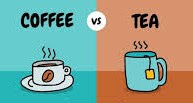Nature’s
Artwork on Display!
Written
by SurfWriter Girls Sunny Magdaug and Patti Kishel
Wouldn't it be nice to find a Leprechaun pot of gold at the end of the rainbow? Rather than looking in Ireland’s Emerald Isle, though, your chances of finding one might be better in another isle – Hawaii!
Rainbows are so prevalent in Hawaii that it has earned
itself the title Rainbow Capital of the World.
These beautiful displays of nature are a key part of island lore and deeply rooted in the culture with some 20 different names for rainbow in the Hawaiian language. Anuenue, Uakolo, Lehopulu, Hakahakaea are just a few.
Frequently represented in Hawaiian arts and crafts, the
rainbow has been depicted in many ways as in this painting by renowned local
artist Heather Brown.
Seeing a rainbow is a good omen, a sign of hope, promise
and beauty. It not only foretells good luck, but many Hawaiians believe
the rainbow is a pathway to heaven, bringing people closer to their
ancestors.
Anuenue, the rainbow goddess and a primary Hawaiian deity, is said to traverse the skies in the form of a rainbow, bringing messages from the gods.
A beautiful blend of mythology and meteorology, Hawaii's rainbows give us a visual representation of our hopes and dreams – something that may be even more valuable than Leprechaun gold.
Sunny Magdaug and Patti
Kishel hold the exclusive rights to this copyrighted material. Publications
wishing to reprint it may contact them at surfwriter.girls@gmail.com
Individuals and non-profit groups are welcome to post it on social media sites
as long as credit is given.




































